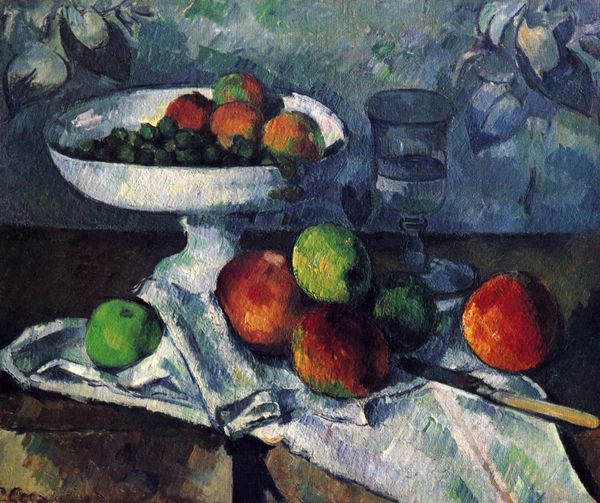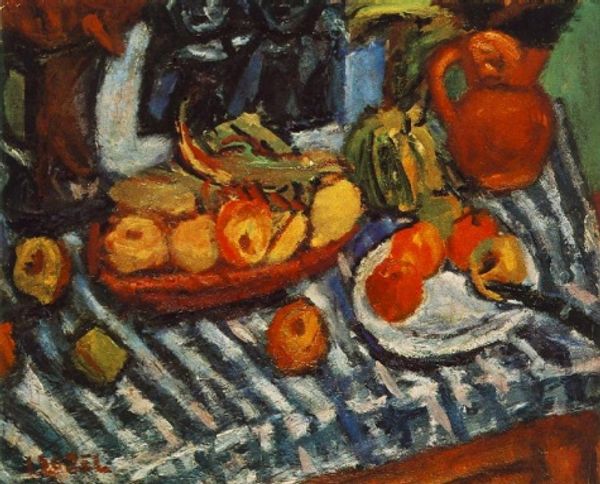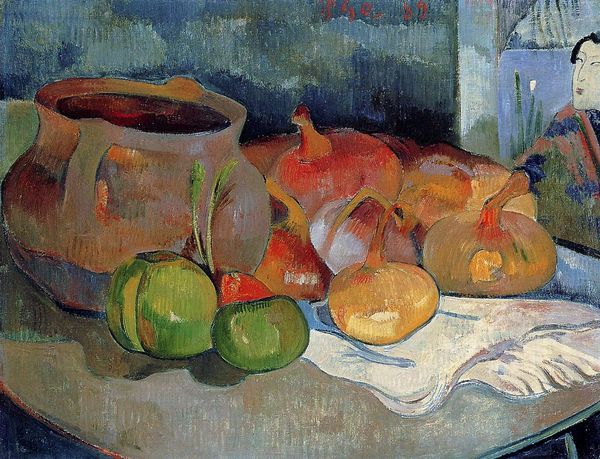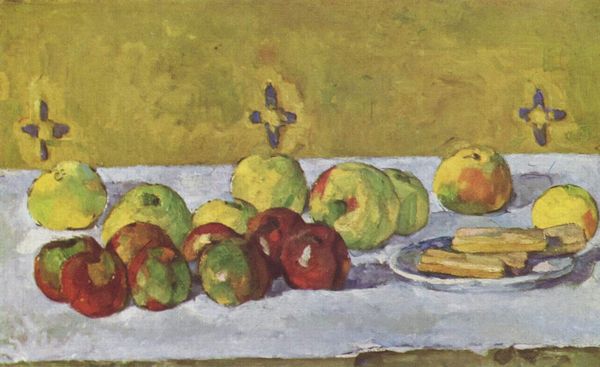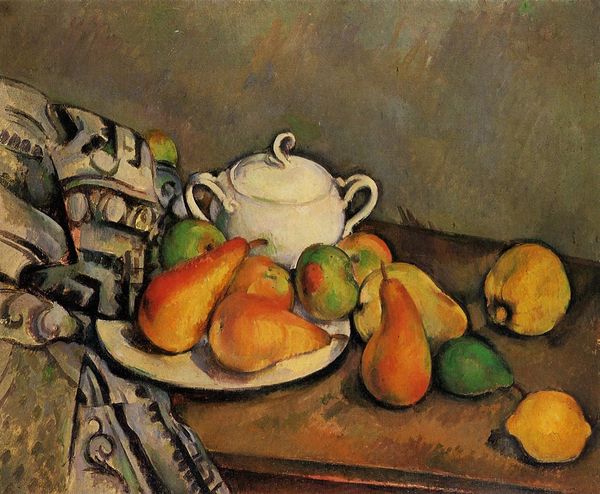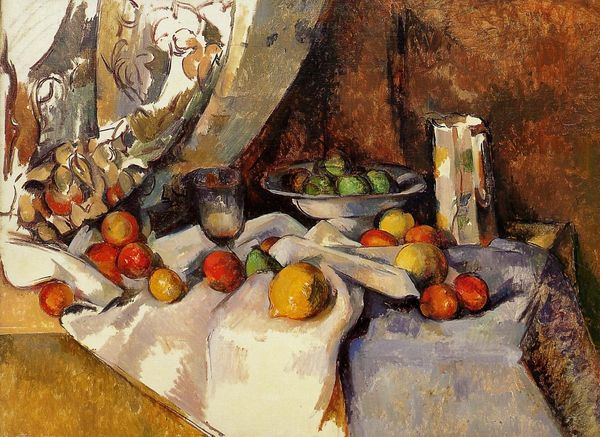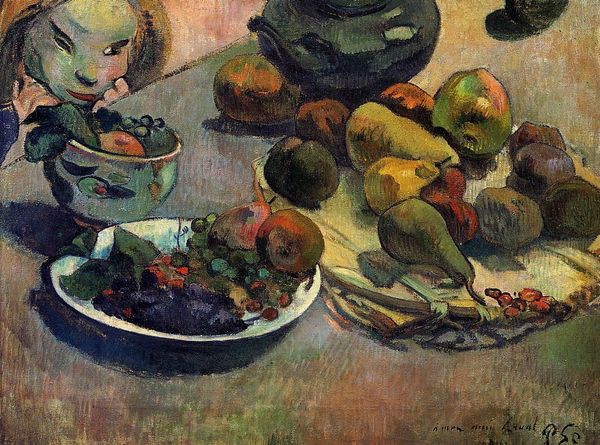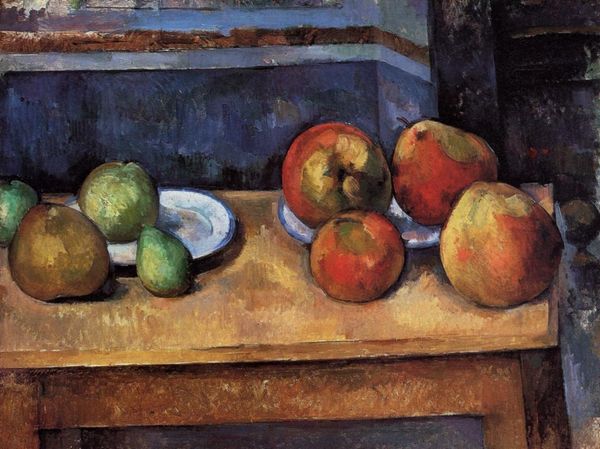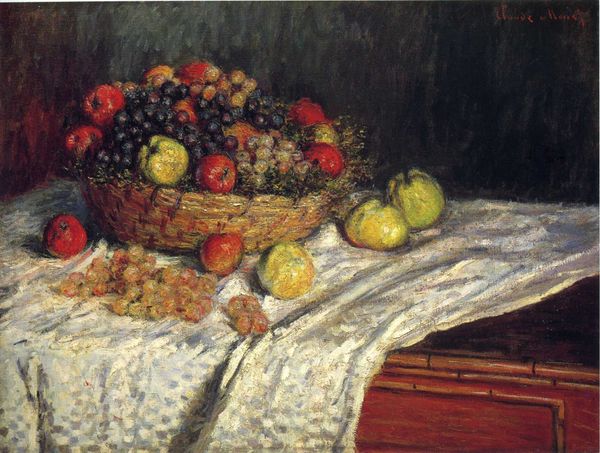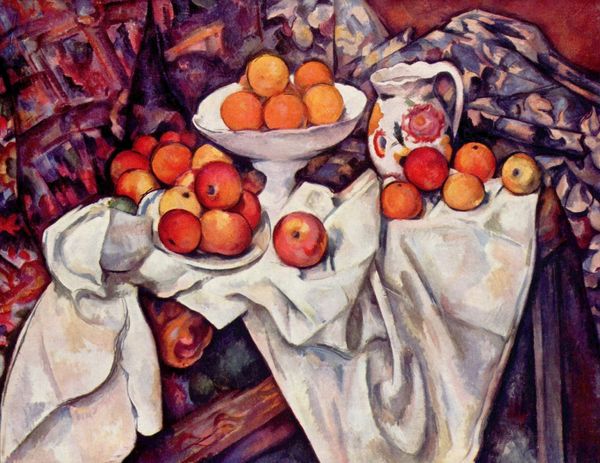
painting, oil-paint
#
painting
#
impressionism
#
oil-paint
#
oil painting
Copyright: Public domain
Editor: Here we have Paul Cézanne’s “Compotier and Plate of Biscuits,” created in 1877. It’s an oil painting. It strikes me as rather humble, and yet…sturdy? I’m curious, what do you make of it? Curator: Oh, it’s a bit of domestic poetry, isn’t it? What seizes my eye immediately is how he elevates these ordinary objects—fruit, biscuits, tableware—to something monumental. It’s as though he's building a little world, block by block. Does the backdrop remind you of anything? It almost feels ecclesiastical, those crosses floating like ghosts… Editor: They do add an interesting…gravitas? Almost religious, yes. The whole composition feels intentionally awkward somehow. Curator: Precisely! It’s that “awkwardness,” that pushing against the accepted way of seeing, that's key to Cézanne. Notice how the perspective shifts, things tilt. It's like he's trying to show you all sides of something at once. It's not about replicating reality, but reinventing it. It’s about *his* reality. Don't you find that freeing? Editor: Very much so. It's as if he is allowing himself, or inviting *us*, to have multiple perspectives. Not everything needs to be one single viewpoint. Curator: Exactly! And the colors? Rich, earthy tones, layered on each other. It gives such weight to simple objects. This is much more than a painting of things to eat, I think. Editor: Absolutely. It has me reconsidering what "still life" can even mean. Curator: Me too. And isn't that the best thing about art? It shifts how we *see* the world, from biscuits to belief.
Comments
No comments
Be the first to comment and join the conversation on the ultimate creative platform.
